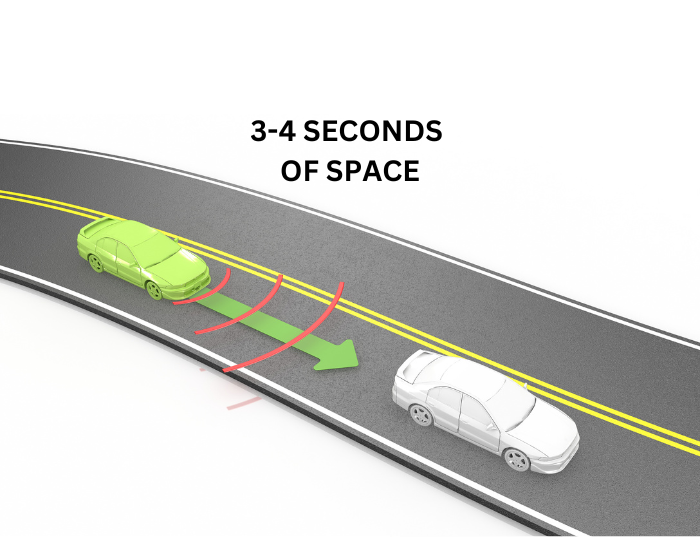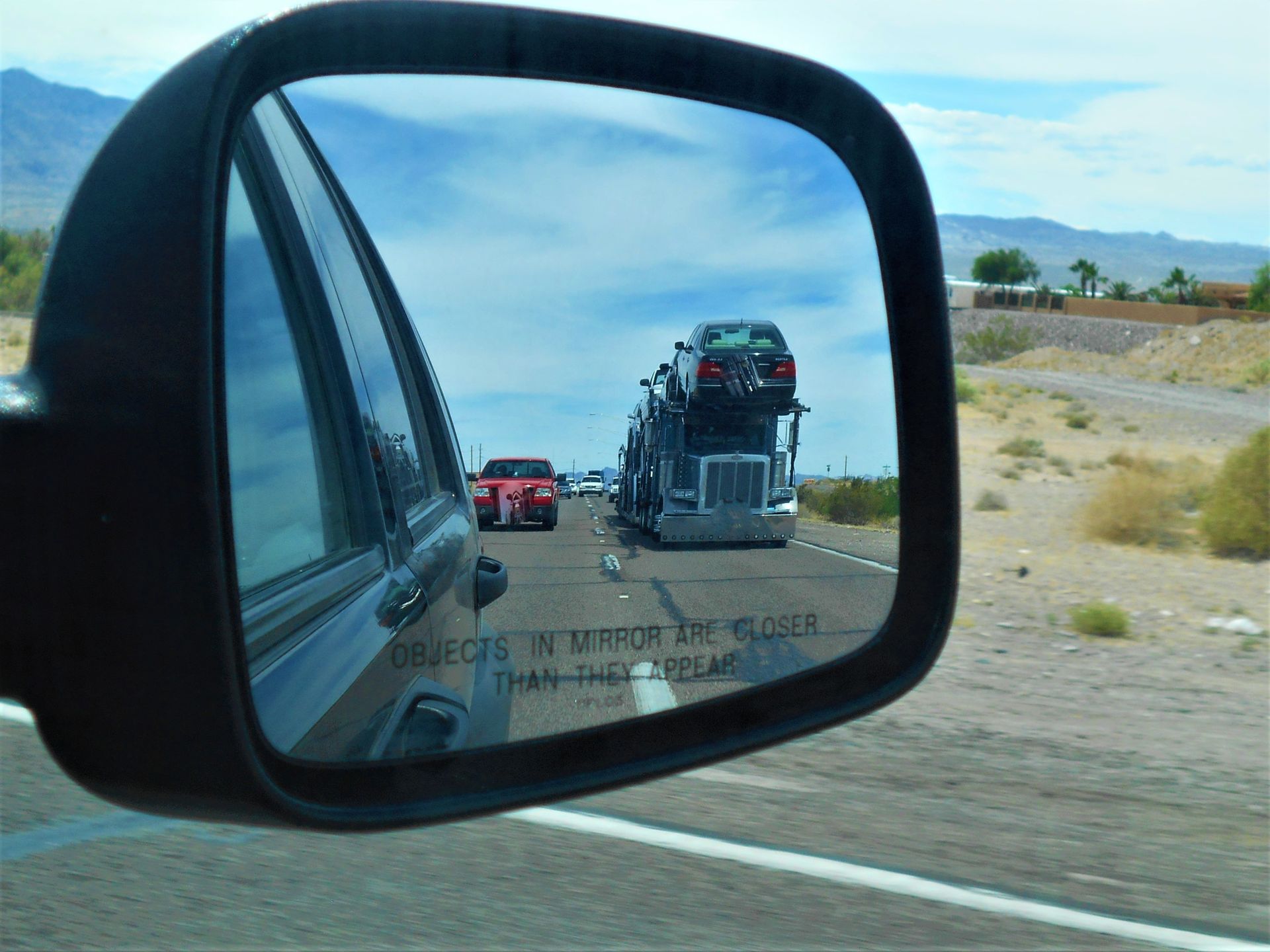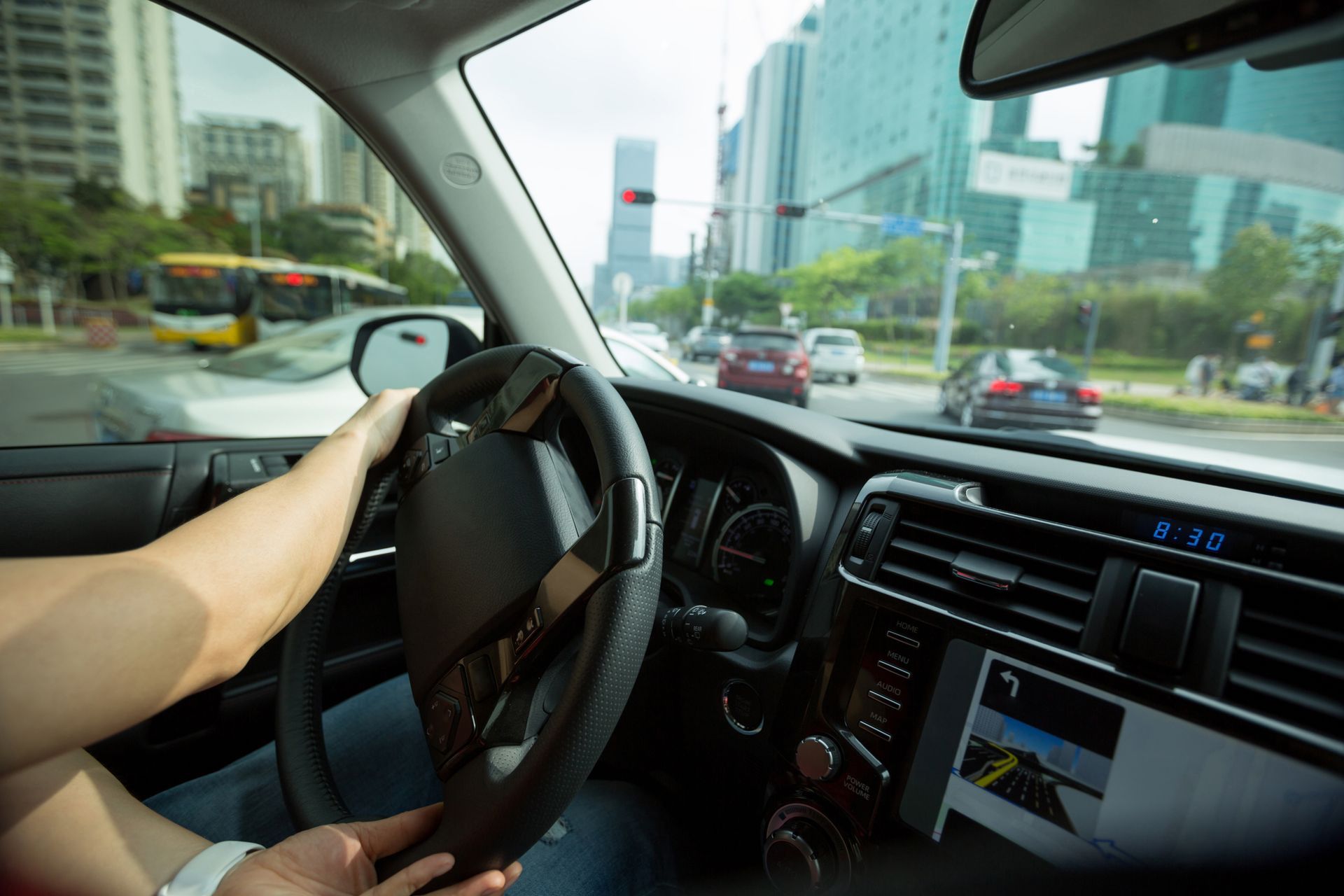Don't Call Christina Later, Call Christina Now
Follow us
How Should I Adjust My Driving During Rush Hour Traffic?
Essential Tips for Safe and Stress-Free Driving in Busy Traffic
Driving during rush hour traffic can be a stressful experience for anyone. The combination of heavy traffic, impatient drivers, and the pressure to reach your destination quickly can make your daily commute feel overwhelming. However, adjusting your driving habits during these peak traffic times can help keep you safe and reduce your stress levels. In this blog, we’ll discuss some practical tips on how to navigate rush hour traffic, stay calm, and drive more safely.
Why Is Rush Hour Traffic Dangerous?
Rush hour traffic often brings with it a series of challenges that can lead to accidents. There are more vehicles on the road, which increases the chances of fender benders and other collisions. Drivers may feel impatient and try to weave in and out of lanes, leading to dangerous driving behavior. Additionally, the added stress of trying to get to your destination quickly can cause distractions and poor decision-making. Rush hour often includes stop-and-go traffic, congested highways, and a mix of drivers with varying levels of experience, all contributing to a higher risk of accidents.
By adjusting your driving during these times, you can reduce your chances of being involved in an accident and make the commute less stressful. Let’s dive into how you can stay safe and calm during rush hour.


Maintain a Safe Following Distance
One of the most important things to keep in mind during rush hour traffic is maintaining a safe distance between your vehicle and the car in front of you. When traffic is heavy, it's easy to get caught in stop-and-go situations. Keeping at least 3-4 seconds of space between your vehicle and the one in front of you gives you enough time to react if the driver suddenly brakes or if you encounter an obstacle in the road.
If you’re not sure how much distance you should leave, pick a fixed point on the road (like a street sign or a tree) and start counting when the car in front of you passes it. If you pass the point before counting to 3, you're following too closely.
Avoid Distracted Driving
When you're stuck in traffic, it can be tempting to check your phone, adjust the radio, or multitask. However, distracted driving is dangerous, especially when traffic conditions are more challenging. Even a few seconds of inattention can lead to accidents.
To avoid distractions:
Keep your phone out of reach or use hands-free options if necessary.
Don’t eat or drink while driving.
Set your GPS or music before you start driving, not while on the road.
Focus on the road, stay alert to sudden changes in traffic, and keep both hands on the wheel.

Use Your Mirrors and Stay Aware of Other Drivers
In rush hour traffic, there’s a lot of lane changing, and drivers are often anxious to get ahead. Stay aware of your surroundings and constantly check your mirrors to ensure you’re aware of other drivers’ movements.
- Use your side mirrors regularly to check for vehicles in adjacent lanes, especially when you're considering switching lanes.
- Be cautious of aggressive drivers who may try to cut in front of you or change lanes quickly. If possible, allow these drivers to pass or give them more space.
By staying aware of the cars around you, you can react quicker to avoid accidents and stay out of dangerous situations.
Use Your Mirrors and Stay Aware of Other Drivers
In rush hour traffic, there’s a lot of lane changing, and drivers are often anxious to get ahead. Stay aware of your surroundings and constantly check your mirrors to ensure you’re aware of other drivers’ movements.
- Use your side mirrors regularly to check for vehicles in adjacent lanes, especially when you're considering switching lanes.
- Be cautious of aggressive drivers who may try to cut in front of you or change lanes quickly. If possible, allow these drivers to pass or give them more space.
By staying aware of the cars around you, you can react quicker to avoid accidents and stay out of dangerous situations.

Plan Ahead and Leave Early
One of the best ways to handle rush hour traffic is by planning ahead. If you know you’ll be commuting during peak hours, consider leaving a little earlier or later to avoid the worst of the congestion. Leaving 15 to 20 minutes earlier can sometimes mean the difference between smooth sailing and getting stuck in traffic for longer than expected.
Check your route for any traffic reports, accidents, or construction before you leave, so you’re prepared for any delays. You can also use apps like Google Maps or Waze to see real-time traffic updates and find alternative routes.
Rush hour typically occurs during the following times:
Morning Rush Hour:
Weekdays: 7:00 AM to 9:00 AM
This is when people are heading to work, school, or other commitments.
Evening Rush Hour:
Weekdays: 4:30 PM to 6:30 PM
This time sees people leaving work, school, and running errands.
These times can vary depending on the region, but generally, the morning and evening hours mentioned above are the busiest for traffic.
Plan Ahead and Leave Early
One of the best ways to handle rush hour traffic is by planning ahead. If you know you’ll be commuting during peak hours, consider leaving a little earlier or later to avoid the worst of the congestion. Leaving 15 to 20 minutes earlier can sometimes mean the difference between smooth sailing and getting stuck in traffic for longer than expected.
Check your route for any traffic reports, accidents, or construction before you leave, so you’re prepared for any delays. You can also use apps like Google Maps or Waze to see real-time traffic updates and find alternative routes.
Rush hour typically occurs during the following times:
Morning Rush Hour:
- Weekdays: 7:00 AM to 9:00 AM
- This is when people are heading to work, school, or other commitments.
Evening Rush Hour:
- Weekdays: 4:30 PM to 6:30 PM
- This time sees people leaving work, school, and running errands.
These times can vary depending on the region, but generally, the morning and evening hours mentioned above are the busiest for traffic.

Stay Calm and Patient
It’s easy to get frustrated when you’re stuck in traffic, but maintaining a calm demeanor is key to staying safe. Tailgating, weaving in and out of lanes, or rushing to make up lost time can put you and other drivers in danger.
- Take deep breaths and focus on staying patient.
- Listen to calming music or an audiobook to help reduce stress.
- If you find yourself becoming too upset, pull over to a safe spot and take a short break to calm down before continuing your journey.
Keeping your cool is not only safer for you but also for the drivers around you.

Drive Defensively
Rush hour driving requires you to be proactive, not just reactive. Defensive driving means staying alert, anticipating potential problems, and being prepared for other drivers’ mistakes.
- Look ahead and be prepared for any sudden stops or slowdowns.
- Be cautious at intersections and look out for red-light runners.
- Signal your lane changes well in advance and make sure the lane is clear before moving over.
Being a defensive driver means you’re always one step ahead, which is crucial in stop-and-go traffic.
Drive Defensively
Rush hour driving requires you to be proactive, not just reactive. Defensive driving means staying alert, anticipating potential problems, and being prepared for other drivers’ mistakes.
- Look ahead and be prepared for any sudden stops or slowdowns.
- Be cautious at intersections and look out for red-light runners.
- Signal your lane changes well in advance and make sure the lane is clear before moving over.
Being a defensive driver means you’re always one step ahead, which is crucial in stop-and-go traffic.


Use Your Turn Signals
In heavy traffic, it’s easy to forget basic driving habits, but using your turn signals is vital for safety. When you’re switching lanes or preparing to exit the highway, always signal your intentions clearly. This alerts other drivers to your moves and helps reduce the risk of accidents.

Be Extra Cautious in Adverse Weather Conditions
During rush hour, bad weather can increase your risk of accidents. If it’s raining, foggy, or snowing, reduce your speed and increase your following distance. Wet roads can be slippery, and poor visibility makes it harder for you to see other vehicles or pedestrians.
In these conditions, you should:
- Use your headlights when visibility is low.
- Drive more slowly to maintain control of your vehicle.
- Avoid sudden lane changes or sharp turns.
Be Extra Cautious in Adverse Weather Conditions
During rush hour, bad weather can increase your risk of accidents. If it’s raining, foggy, or snowing, reduce your speed and increase your following distance. Wet roads can be slippery, and poor visibility makes it harder for you to see other vehicles or pedestrians.
In these conditions, you should:
- Use your headlights when visibility is low.
- Drive more slowly to maintain control of your vehicle.
- Avoid sudden lane changes or sharp turns.

Rush hour traffic can be stressful, but by making a few adjustments to your driving, you can stay safe and reduce your anxiety. Maintaining a safe distance, avoiding distractions, staying aware of other drivers, and planning ahead will help you navigate heavy traffic with more confidence. The most important thing is to remain calm and patient, as aggressive driving can lead to accidents that could otherwise be avoided.
Driving during rush hour doesn’t have to be a nightmare. By following these safety tips, you can make your commute safer and more manageable. If you’ve been in an accident during rush hour, don’t hesitate to reach out for support. Contact us today for guidance on how to handle the aftermath and recover the compensation you deserve.
Quick & Reliable
We are available 24/7 to Guide You to Better Health.
CALL CHRISTINA NOW is here to help 24 hours a day, 7 days a week, offering free and compassionate support. When you call us, we'll listen to your concerns, understand the specifics of your accident, help you find medical care for your injuries, and connect you with a professional who can advise you on the legal aspects of your situation.
CALL CHRISTINA NOW specializes in assisting with Lawyer and Medical Accident matters. If you've been in a car, motorcycle, or truck accident—or any other kind of accident—contact us today for trustworthy support.
DISCLAIMER:
CALL CHISTINA NOW isn't a law firm and can't provide legal advice, but we can refer you to the right attorney who can.
All Rights Reserved | Call Christina Now
Copyright © Call Christina Now Offers All Rights Reserved 2025
View Our Privacy Policy | Terms & Conditions | Disclaimer
